The Great Tea Race of 1866
At the height of the sailing era, four of the world’s fastest clippers raced home with the season’s precious early cargo of tea
/https://tf-cmsv2-smithsonianmag-media.s3.amazonaws.com/filer/20111215040100Tea_Clippers_Race.jpg)
Captain John Keay, master of the crack new British clipper ship Ariel, had good reason to feel pleased with himself. He had secured the first cargo of tea to come to market at the great Chinese port of Foochow (modern Fuzhou) in 1866—560 tons of first and second pickings, freighted at the high price of £7 a ton: the very finest leaves available. The cargo had been floated out to him in lighters, packed in more than 12,000 hand-made tea chests, and stowed below decks in the record time of just four days. Now Ariel was weighing anchor at 5 p.m. on the evening of May 28–the first tea clipper to sail for London that season.
She was a brand new ship: “A perfect beauty,” Keay recalled, “to every nautical man who saw her; in symmetrical grace and proportion of hull, spars, sails, rigging and finish she satisfied the eye and put all in love with her without exception. Very light airs gave her headway, and I could trust her like a thing alive in all evolutions.” Ariel was indeed the fleetest vessel of her time; flying the astounding total of more than 26,000 square feet of canvas, she could reach speeds of 16 knots, far faster than contemporary steamers.
But the advantage that Keay held over the other clippers crowded in the port was minimal, and Ariel was unlucky with her tugs. The paddle steamer Island Queen, hired to take the clipper in tow, lacked the power to carry her across the bar of the Min River against a falling tide. Stranded for the night, Keay and his crack crew were forced to lie at anchor and watch as their rivals completed their own hurried loading and started in pursuit. That evening the rival Fiery Cross came down the river towed by a more powerful tug, edged her way into clear water, and set a course east across the China Sea. Keay was still negotiating the bar next morning when two other clippers, Serica and Taeping, appeared beside him. The Tea Race of 1866—the most exciting in the history of the China trade—was on.
Tea was one of the very few commodities carried at speed in the heyday of sail. Other cargoes were either too bulky or insufficiently valuable to make it worth risking a whole ship and crew in racing through the typhoons and the shoals of the South China Sea with all sails set, just to be able to dock in the Port of London a few hours or days ahead of the pack. But in the middle of the 19th century, demand for fresh tea was such that the first vessel home from Fuzhou or Shanghai could command a premium of at least 10 percent for her wares, and a clipper ship that cost perhaps £12,000 or £15,000 to build might bring home a cargo worth almost £3,000 on her first voyage.
The tea trade dated to the mid-16th century, when the Portuguese established a base at Macao, just west of Hong Kong. But the remoteness of China, and its emperors’ hostility toward Western merchants desperate to trade in silks and spices, meant that the beverage remained almost unknown in Britain until the restoration of Charles II in 1660. When the English East India Company, which had secured a royal monopoly on the trade between England and China, wished to thank the monarch by making him a present of tea, its agents had to scour London to find even two pounds of leaves.
For the next century and three quarters, the monopoly gave the Company little incentive to hurry its cargoes home. But it ended in 1834, and the subsequent repeal of the ancient Navigation Acts—which banned the import into Britain of goods not carried in a British ship—spurred the construction of far faster and more capable merchantmen. Another incentive was the growing competition from the United States, whose yards were turning out sailing ships as good as or better than the best that could be built in Britain; still another was the burgeoning trade in opium, grown in India and sold in Canton—one of the few cargoes carried in Western vessels for which there was real demand in China. Since the companies now trading with China were reluctant to drain their treasuries of silver to purchase tea, the opium trade was much encouraged, even though the Qing emperor had declared it illegal in his dominions. Sleek sea greyhounds of the clipper class proved admirably suited to the task of running British drugs up the China coast.
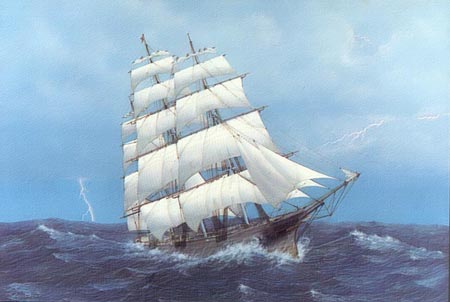
The 1850s American clipper Lightning, sailing out of San Francisco, was more than capable of matching the finest British vessels of the day for speed. Image: Wikicommons.
Some hundreds of clipper ships were built between 1845 and 1875, mostly in the U.S. and Scotland, and tested against each other in what became highly publicized “tea races” as they vied to be first home with the new season’s cargo. Today, the clippers are regarded as the apogee of ship design during the sailing era. They were distinguished, first, by the rakish bows that gave them their name, which swept forward at an angle of up to 50 degrees and lent the vessels a lean and eager look, and, second, by their narrow beam and lofty sail plans. Below the waterline they boasted radical new lines, with knife-edge stems, narrow foreparts, a long flat run aft to the rudder, and a sharp “rise of floor”— the slope at which the hull angles outward from the central keel to the ship’s sides.
The merchant shipbuilders of the time were not yet really engineers; naval architecture remained the province of navies, and civilian designs were based on experience, instinct and rule of thumb. Some clipper builders may have known of the engineer John Scott Russell and his wave-line theory, the first modern mathematical statement of the relationship between hull design and speed, but no two ships built in any yard were truly alike, and often only time could tell which would prove good in the water and which would disappoint. When William Hall, the Aberdonian master shipbuilder who designed the prototype clipper Scottish Maid in 1839, proposed to test his new idea for a sharper bow by sailing a model in a tank, his decision raised eyebrows in the city’s other yards. But Hall’s “Aberdeen bow” added speed without limiting cargo capacity. A ship built along those lines encountered far less resistance to her passage through heavy seas. Instead of progressing in a series of checks and shocks as she encountered wave after wave, eventually burying her stem and forcing her crew to reduce sail for fear of being swamped, a clipper could cut through the swells. The new design soon inspired imitations.
The earliest true clipper hulls, however, appear to have evolved independently in the United States and Scotland at about this time. An American merchantman, the Rainbow of 1845, is sometimes described as the first of the clipper breed, and her immediate successor, the Oriental, created a sensation by making the passage from New York to Hong Kong in only 81 days in 1850—a time unmatched for the day. The Oriental was immediately offered a premium of 25 percent above the prevailing freight rates to accept a charter for London. Loaded with almost 1,650 tonnes of tea, she left Whampoa, the tea port north of Hong Kong, on August 27, 1850, and sailed south against the monsoons, reaching the West India Dock in London on December 4–just 99 days later. The older British opium clipper Astarte, which sailed from Whampoa a day later, took a month longer in passage. It took British shipbuilders several years to match the Oriental, but after that they made more innovations to produce ships of the caliber of Ariel and her consorts in the Tea Race of 1866.
The flourishing of the China trade crowned centuries of trial and error with masts and sails, and the power that a clipper could draw from a following wind with all sails set was far greater than anything that could be supplied from contemporary steam engines. A typical clipper ship of the late 1860s had three masts, each of which would be fitted (looking from the bottom up) with a lower course sail, double topsails, single or double topgallants, a royal and a skysail. Some masters, anxious to cram on every stitch of canvas, might also unfurl small sails known as moonrakers at the very tip of each mast, and add supplementary staysails and studding sails, as well as fancy racing canvas such as water sails close down along the waterline. A crack ship such as Ariel could easily set thirty or more sails in the most favorable conditions, and any clipper taking part in the tea race might average 11 or 12 knots in reasonable conditions, at a time when the steam fleet made eight or nine knots and would need to coal four or five times on a passage between Britain and China.
A clipper designer would also devote much attention to smoothing his ship’s “run,” her bottom at the after end. This practice lessened friction and added speed—but it also had its dangers. Too clean a run could result in an excessively fine form above the waterline and a consequent lack of buoyancy which often led to a ship being pooped—that is, swamped by a following wave. Ariel was one of a number of ships that suffered from this tendency, and when she vanished without trace while on passage in 1872 it was generally assumed that a following sea had struck from behind and washed her helmsman overboard. With no hand on the wheel, the clipper would have swung broadside to the following wave and been struck with such ferocity she would have sunk almost instantly.
Nautical men also acknowledged that the finest clipper would be nothing without a captain prepared to drive her hard for every moment of a voyage. The best masters pretty much lived on deck for the three-and-a-half month passage, and the ceaseless efforts made by Dick Robinson of the Fiery Cross were said to be worth an extra half-knot in speed to any ship he captained. Even conservatively built ships were generally loaded so they were trimmed down at the stern, as it was considered that the extra weight helped their sailing qualities. Once all the tea had been stowed away, the crew would still have to work hard to redistribute their cargo so as to ensure the optimum speed; some captains took matters further still. Ariel was noted for keeping on deck an enormous box, twelve feet long, packed with the heaviest metal obtainable. Once at sea, Captain Keay would watch as his men labored to drag the box to and fro until he was satisfied that its position would add still another edge to his performance.
As he watched the Fiery Cross pull away in that evening in May 1866, Keay must have realized he would have to call on all of his ship’s fine qualities to win that season’s tea race. His rival, built six years earlier, had proved herself by far the fastest and most successful clipper of the early 1860s, while his own ship was comparatively untried. Although slightly smaller than Ariel, the ship now receding into the dusk of the China Sea boasted elegant lines that made her a good sailer to windward, and her master, Robinson, had fitted her with all manner of gear, including roller-reefing equipment to improve the efficiency of the sails. More important, Robinson was a highly experienced racer who had brought Fiery Cross home to London first in the tea races of 1861, 1862, 1863 and 1865, being beaten in 1864 only by the brand-new Serica. He had been rendered so anxious by the Ariel‘s early departure he had departed the moment his cargo was complete, without his papers and without signing the official bills of lading—thus gaining 12 hours on the Taeping and the Serica and reducing the latter’s master, Captain George Innes, to an apoplectic fury.
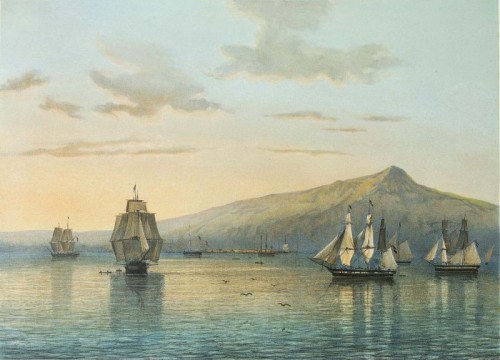
Anjer in Java, one of the waystations on the clipper route–though the fast ships sailed non-stop from China home to London, San Francisco or New York.
The four contenders sailed east to round the northern coast of Formosa (now Taiwan), then shaped a course to the south. Occasionally they came close enough for the crew of one ship to see the men of another over the water, setting more sails or trimming their vessel to coax an extra quarter-knot from her, but mostly the rival clippers sailed independently. Fiery Cross made good use of the 14-hour lead she had gained over Ariel at the bar of the Min River, and reached Anjer, at the exit to the China Sea, only 20 days out from Fuzhou. Taeping and Ariel had fallen two days behind, and Serica did not pass the town for another day after that. But the weather in the Indian Ocean and around the Cape of Good Hope evened matters out somewhat; all four ships made fine time, Ariel logging a single day’s run of 317 miles and Fiery Cross one of 328. By the time the island of St. Helena came over the horizon, Captain Donald MacKinnon’s Taeping held a slender lead of 24 hours over Fiery Cross, with Ariel and Serica one day further behind.
Three of the four rivals were composite ships, built of wood over an iron frame, but Serica was lighter, built of wood only, and had finer lines than her half-sister Taeping. Her captain, Innes, was a notorious taskmaster with a volcanic temper, and in the lighter winds around the Equator he caught up with MacKinnon. Ariel was picking up speed too, and all four vessels passed Flores, in the Azores, together on August 29.
The wind remained fair, blowing from the southeast, as the racers headed for the English Channel. Gradually they strung out into a line, luck or determination slightly favoring Ariel and Taeping over Fiery Cross and Serica. Still together after 97 days at sea, the two leaders ran up the Channel in sight of each other, both logging 14 knots for most of the day as they made for Deal and the Tea Race’s unofficial finish. At eight on the morning of September 6, Ariel was spotted signaling her number by watchers on the shore, and not ten minutes later Taeping hove into view to claim second place. Serica was less than two hours behind, with Fiery Cross an unlucky and (to Robinson) humiliating 36 hours further back.
Even then, the racers seem to have been reluctant to abandon their chase. With Keay unable to afford the latest tug, Taeping nipped into the London docks 25 minutes ahead of Ariel. He and MacKinnon agreed to split the premium of 10 shillings per ton awarded to the first ship home each season.
The Tea Race of 1866 caused an enormous stir in the sporting and nautical circles of Britain. Ariel and Taeping had left Fuzhou together and arrived home on the other side of the globe still together, Ariel‘s winning time being seven thousandths of one percent faster than her rival’s. The Tea Race was never so close again in its 30-year history.
Sources
Leeds Mercury 13 June 1866; Glasgow Herald 7+12 September 1866; George Campbell. China Tea Clippers. London: Adlard Coles, 1974; Howard Chapelle. The Search for Speed Under Sail. London: George Allen & Unwin, 1968; Arthur H. Clark. The Clipper Ship Era. An Epitome of Famous American and British Clipper Ships, Their Owners, Builders, Commanders and Crews 1843-1869. New York: G.P. Putnam’s Sons, 1911; Basil Lubbock. The China Clippers. Glasgow: James Brown, 1919.
/https://tf-cmsv2-smithsonianmag-media.s3.amazonaws.com/accounts/headshot/mike-dash-240.jpg)

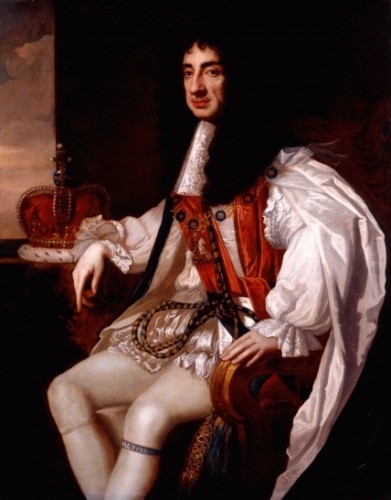
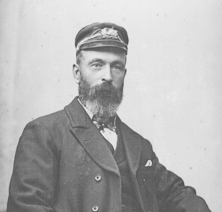
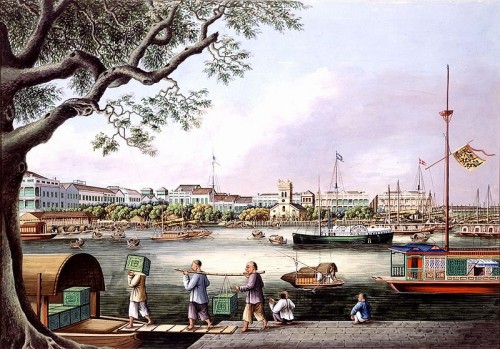
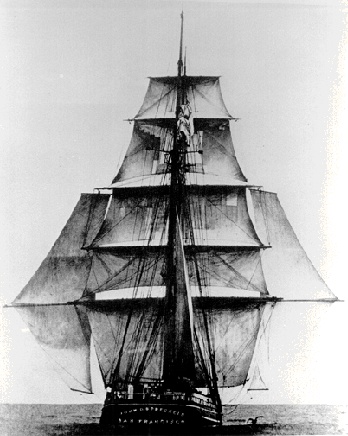
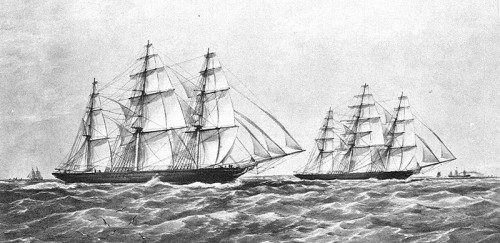
/https://tf-cmsv2-smithsonianmag-media.s3.amazonaws.com/accounts/headshot/mike-dash-240.jpg)